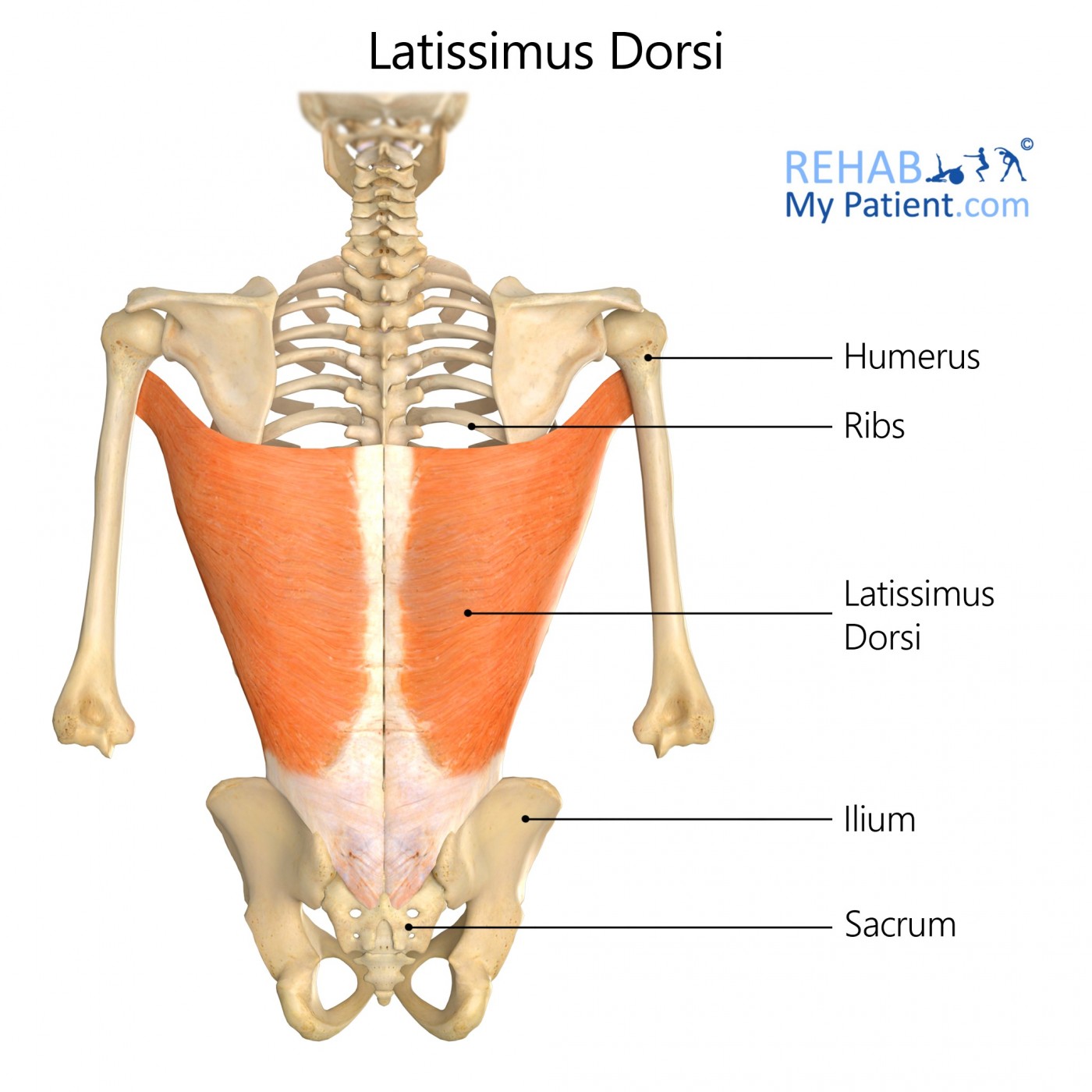
General information
Latissimus dorsi is a large, broad muscle of the back.
Literal meaning
The broadest muscle of the back.
Interesting information
As its Latin name suggests, latissimus dorsi is a very large muscle of the back. It is commonly referred to as “lats” by those in the physical fitness, athletics, or bodybuilding worlds. A small portion of latissimus dorsi is covered by the trapezius muscle.
A number of anatomical variations have been clinically observed in latissimus dorsi. For instance, the number of vertebrae to which the muscle attaches can vary, generally between four and eight vertebral attachments. Latissimus dorsi may or may not extend fully to attach to the iliac crest. In addition, a muscular slip, called the axillary arch, is present in roughly 7% of the human population. This slip originates from the superior edge of the latissimus dorsi and crosses the axilla. Its location close to the axillary artery may confuse surgeons when they attempt to place a ligature on the artery.
Injury to latissimus dorsi usually manifests as shoulder or back pain. Inactivity or lack of stretching may cause latissimus dorsi to become tight which reduces shoulder function and will cause chronic pain.
Latissimus dorsi is used in a procedure called cardiomyoplasty. This surgical intervention is used for patients suffering from sub-optimal cardiac output due to advanced heart disease who cannot be placed on the heart transplant list. The procedure entails surgically wrapping latissimus dorsi around the failing heart and then using electrostimulation to synchronize muscle contracture with natural ventricular systole.
Origin
Spinous processes of the vertebrae (T7 to sacrum); external surface of lower three ribs; iliac crest.
Insertion
Intertubercular groove of the humerus.
Function
Adducts, extends, and medially rotates the humerus.
Nerve supply
Thoracodorsal nerve (C6-C8).
Blood supply
Thoracodorsal artery.

Relevant research
In addition to being used to improve cardiac output through cardiomyoplasty, latissimus dorsi may also be used to restore voiding in patients suffering from bladder dysfunction. This breakthrough surgical procedure could eliminate the need for these patients to rely on self-catheterization for urine output.
Van Koeveringe G, Rademakers K, Stenzl A. (2013). “Latissimus Dorsi Detrusor Myoplasty to Restore Voiding in Patients with an Acontractile Bladder - Fact or Fiction?” Curr Urol Rep. 2013 Jun 18.
Latissimus dorsi has also been widely used in breast reconstruction following mastectomy. The aesthetic result of latissimus dorsi breast reconstruction is currently being improved by surgical advancements including new tissue expanders and novel implant designs.
Hammond DC. (2009). “Latissimus dorsi flap breast reconstruction”. Plast Reconstr Surg. 124(4):1055-63.
Latissimus dorsi exercises

There are a number of exercises that can strengthen latissimus dorsi, commonly referred to as the “lats”. But while most of these exercises work multiple back and shoulder muscles, the pulldown specifically targets latissimus dorsi. Pulldowns can be done using a pulldown gym machine, or using an exercise band, secured above your head. Sit down on the seat, adjust the weights or exercise band according to your strength and weight goals, grip the bar or ends of the band above, and pull your elbows down horizontal to lift the weights and work latissimus dorsi.
Sign Up
Sign up for your free trial now!
Get started with Rehab My Patient today and revolutionize your exercise prescription process for effective rehabilitation.
Start Your 14-Day Free Trial